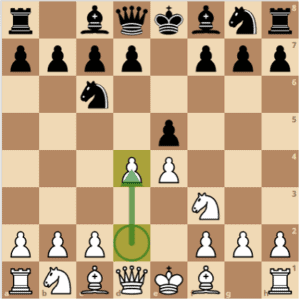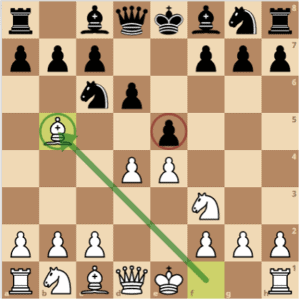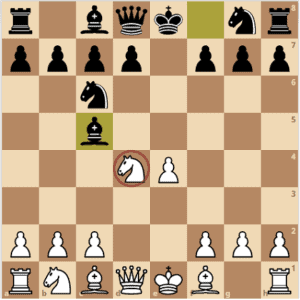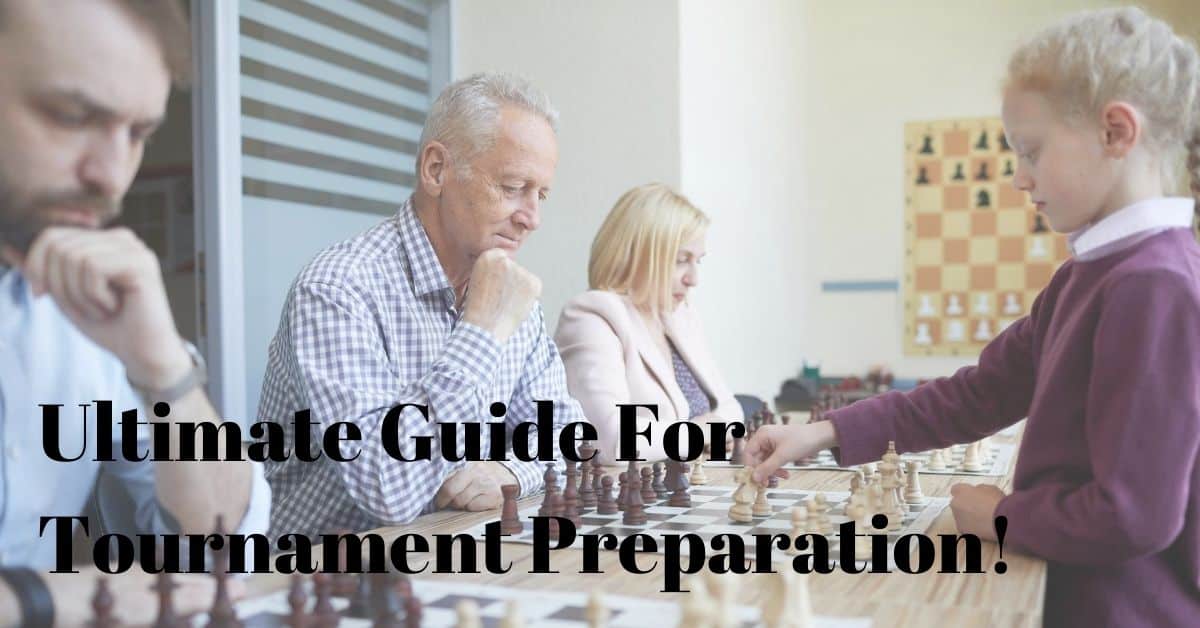In this article, we’re going to look at a highly tactical opening in chess known as the Scotch Opening. It begins with the moves 1.e4 e5 2.Nf3 Nc6 3.d4 With this opening, the pieces are going to come into close contact very quickly, and so we’re going to get a chance to look at all kinds of tactical details in this fascinating opening. But before we do so, let’s have a look into a brief origin of the opening.
Origin of the Scotch Game

The Scotch game received its name from a celebrated correspondence match between London and Edinburgh in 1824, though of course, the three opening moves are older. It is another opening that was mainstream in the 19th century. The Scotch is different though because it has been resurrected to nearly its significance of a century earlier.
Garry Kasparov has lead to the revival of playing the Scotch Game; playing it in three successive World Championship matches (1990, 1993, and 1995) and inspiring other grandmasters to add it to their repertoire.
How To Play The Scotch Opening
To reach the Scotch game, White begins with the move 1.e4, immediately grabbing central space and preparing the advance of d2-d4. To quickly mobilize its pieces and slow down White’s ambitions, Black selects pawn to 1…e5 with the so-called King’s Pawn Game. Now comes the standard move 2.Nf3 Nc6 and here, we’ve arrived at a standard position.
The starting position of the Scotch Opening

White’s aim in the position is to achieve the advance of the d2 pawn to d4 under favorable circumstances. Normally, White would complete some of his kingside development either with Bishop to b5, leading to the Ruy Lopez or Bishop to c4 which would be known as the Italian game. He’ll later castle and then prepare the advance of d2-d4 by first playing c2-c3 where you would get to recapture with a pawn.
However, in the Scotch, White chooses a different strategy altogether. He immediately lashes out with the move 3.d4! and this is the signature move of the Scotch opening.
Advantages of the Scotch
Now, there are some real advantages of playing the move d2-d4 in the Scotch Opening so early in this position: One advantage is Black clearly must react to the threat to the e5 pawn right away. Black doesn’t really have an option to play a passive move such as 3…d6 since this will lead to all kinds of problems. One very interesting way to exploit this move would simply be 4.Bb5 which will add pressure to the central pawns. This is in fact a very strong move by White.

The Bishop pin is creating tension in the center
Another obvious approach to dealing with 3..d6 would simply be to play 4.dxe5 dxe5 5.Qxd8. Here, White does not have the option to recapture with his knight since he would be leaving the e5 pawn hanging. Therefore, Black must relinquish castling rights with 5…Kxd8 thus leaving his king in the center and making it more difficult to deploy his pieces as well as to coordinate them properly in the rest of the middlegame.

It turns out then that Black has little choice but to play 3…exd4. After 4.Nxd4, we reach the position shown here.

By playing d2-d4 so early, White has forced Black to exchange his stronghold pawn in the center with the move 3…exd4. At the same time, White has gained a centralized post for his knight on d4 and has opened up some scope for the dark-squared bishop.
On the other hand, Black has a few reasons to be excited about this early exchange in the center. Unlike other openings such as the Ruy Lopez, Black no longer has to worry about defending the e5 pawn with his life.
Benefits For Black in the Scotch Game
Backing up just a little bit, the aggressive Ruy Lopez with 3.Bb5, or even the quiet move 3.Bc4 often bait Black into spending some extra time in defending his e5 pawn. This can cause Black to play the cramping move d6 at some point in the game just to hold on to his e5 pawn. However, in the Scotch opening after the exchanges in the center, Black never again has to worry about the future of his e5 pawn and this allows him to develop a little bit more freely.
In our last position above, White has made two moves with his knight on d4. This means that Black doesn’t have to worry too much about falling behind in development in the opening either. This is a concern that Black constantly needs to monitor in the other openings like the Ruy Lopez or Italian game.
Scotch 5…Bc5
It turns out that Black has two sensible developing moves in this position after 1.e4 e5 2.Nf3 Nc6 3.d4 exd4 5.Nxd4
The two moves are either 5…Nf6 or 5…Bc5 The variation that we’re going to look at is 5…Bc5.

Black begins to add pressure on the d4 knight
With this move, Black deploys his bishop to c5 and is immediately adding pressure to the centralized knight on d4; perhaps baiting that knight into retreating. In fact, many White players do unwittingly play 6. Nb3 in this position. However, after 6…Bb6, White no longer profits from the centralized position of the knight on d4. White is actually a little bit behind in development as Black has two pieces developed while White only has one.
It’s very easy for Black to play comfortably here. He’ll finish up his kingside development, and then he’ll either target the e4-pawn as a weakness or he’ll look to achieve the equalizing pawn break d5!
Scotch Opening 6.Nxc6 Mainline
After this move 5…Bc5, White needs to do something more enterprising. 6.Nxc6 is one strong method to continue. White’s argument here is that both of Black’s potential recaptures have serious downsides.
If Black replies with 6…dxc6, White once again replies with 7.Qxd8 leaving Black with a small but significant disadvantage. White can easily castle, connect rooks and bring his pieces to attractive locations whereas Black will struggle to harmonize his pieces.
Another serious problem in positions like these is that White will have a much easier time in the endgame since it’s easier for White to create a passed pawn with his pawn majority than it is for Black on the queenside thanks to the doubled pawns.
The alternative recapture, 6…bxc6, still leaves White with a very pleasant situation after the strong developing move 7.Bd3. White will one day simply castle, complete his kingside development and then he’ll be looking to play the move pawn to f4, thereby creating serious chances for attack. On the other hand, Black will be lacking any real sort of counter-play. The capture on c6 appears to be quite strong. But in fact, Black has a sneaky third option available in the position below; that move is 6…Qf6.
The Queen evacuated the d8 square and threatens mate in one on f2. This buys Black just enough time to capture on c6 under more ideal conditions. And, if you take a close look at the position, you’ll recognize that defending f2 is not such an easy task.
White simply doesn’t want to push the f-pawn forward since this would turn the bishop on c5 into a monster, and it would deprive White of the option of castling kingside for quite some time.
So instead, White often plays either 7.Qd2 or 7.Qf3. However, both of these moves have some drawbacks. And from here, Black has quite a few different ways to play. He can mingle White’s structure a bit with the move 7…Qxf3 before capturing on c6. Or, he can simply capture on c6 with the d-pawn.
In this case, Black no longer needs to worry about the Queen taking d8 which would displace his king and get rid of castling rights. After 7…dxc6, it’s true that this still leaves White with a bit of structural advantage but Black should have fewer problems here getting his pieces attractive locations. Black also has the plan of perhaps creating some counter-play against White e-pawn since the f-pawn does not want to move in this position.
(Black shouldn’t worry about his structural damage too much in this position) 7…Qxc6 is also another option but actually tends to be frowned upon.
Scotch Opening 6.Be3 Mainline
It’s thanks to moving 6…Qf6 that Black is not inferior in the position after knight captures on c6. Even so, plenty of players handling the Black pieces is not aware of this move Qf6. And, even after Black has played the move 6…Qf6, there is still potential for White to outplay Black in an endgame, which he may be more comfortable with.
However, if White wants to play more ambitiously and steer the game towards tactical variations, his alternative idea is to maintain the post of the position of the knight on d4, and he normally does this with the move 6.Be3 which is just as popular as the move 6.Nxc6. Now it turns out that once again, Black’s best move in this position is 6…Qf6 but this time it’s for different reasons. Black is not doing this in order to threaten mate in one. Instead, Black is simply continuing to apply pressure to the knight on d4.
There’s another point to this move 6…Qf6. After White played the move 6.Be3, He had also set up a threat of Nxc6, winning material immediately thanks to the exposed location of the Bishop on c5. However, after the move 6…Qf6, this no longer works since after the move 7.Nxc6 Black can simply play 7…Bxe3 and the queen is no longer sitting on d8 waiting to be captured.
In the above position, it’s still clear that White does not want to move the knight from that d4 location, since in this position that would expose the Bishop on e3. Therefore, White simply plays the move 7.c3 continuing to maintain the post of that knight.
Now, Black continues his development with the move 7…Nge7 and at this moment we reach a very interesting point where Black is very close to achieving an equal position with the pawn thrust d5!
If White just continues his development without paying too much attention for e.g 8.Be2 or 8.g3, Black is fully justified in playing the move 8…d5! when most of his opening problems would be solved.
Once again, White finds himself in a situation where he needs to react very precisely if he wants to keep a serious shot at the initiative going. It turns out the recipe here for White is the move 8.Bc4 which not only develops but also prevents Black from achieving the ambitious thrust of pawn to d5.
From here, the onus is on now on Black to prove that his pieces have the capacity to for activity before White simply builds up the attack with his eventual move pawn f2-f4. It’s very interesting to explore the various tries for both sides here. But, theory has eventually shown for good reason that Black’s strongest way to continue now is the move 8…Ne5, pushing the bishop away.
9.Be2 Qg6
Here the black queen is attacking e4 and g3 pawns. Both of these moves are very important that Black played and is aware of the subtleties. Once again, as he often does in the Scotch Opening, Black is using the pressure against e4 as a way to slow White down since White always wants to avoid making the pawn move f2-f3 which leaves the dark-squared diagonal vulnerable and is taking away from our eventual aim of making that pawn move all the way to f4.
At the same time, Black retains the ability to break either with the moves pawn to d5 or perhaps even with the move pawn to f5 at this point. It’s these factors that fully compensate for his slight delay in development in the somewhat vulnerable position of his queen. And so, they have reached a complex and interesting position with chances for both sides
Conclusion to the Scotch Game
I hoped you have enjoyed this brief rundown of some key variations of the Scotch Opening. By playing the d2-d4 thrust so early in the opening, White has succeeded at creating an immediate tactical clash, which can either be played by White as a chance to reach an endgame with a positional battle lying ahead, or it can also be used in order to create tactical conditions in which both sides must meet each other precisely blow for blow in order to avoid falling behind.
As White, this is an excellent opportunity to seize control over the direction of the game and to choose what kind of game will be played. Whereas with Black, if you’re willing to do a little bit of homework and you have a few variations prepared you can also count on good winning chances in the positions which lie ahead.







